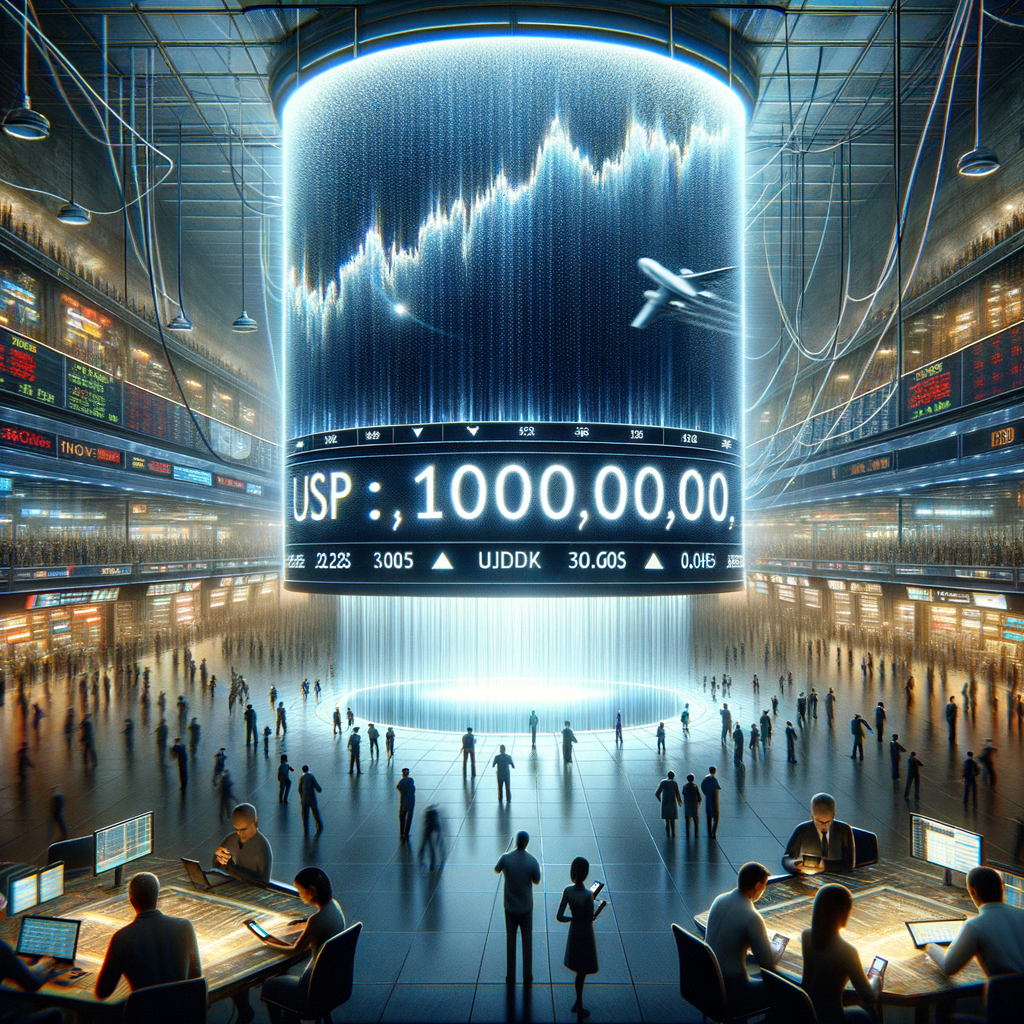The Impact of AI on Market Dynamics: Projecting the Dow’s Ascent to 100,000
The Potential of Dow Reaching 100,000 in 10 Years due to Artificial Intelligence Boom
In the ever-evolving landscape of global markets, the Dow Jones Industrial Average stands as a barometer of economic might, reflecting the vitality of the largest industrial entities in the United States. As we stand on the cusp of a technological revolution spearheaded by artificial intelligence (AI), the prospect of the Dow reaching the once-unthinkable milestone of 100,000 in the next decade is not only conceivable but increasingly probable.
The burgeoning AI boom promises to be the catalyst for this unprecedented growth, as industries across the board are poised to undergo transformative changes. AI’s integration into various sectors, from healthcare and finance to transportation and manufacturing, is expected to unleash a new era of efficiency and innovation. This technological renaissance is likely to translate into significant earnings growth for companies, thereby propelling the Dow to new heights.
Moreover, AI’s potential to disrupt traditional business models cannot be overstated. As machine learning algorithms and data analytics become more sophisticated, businesses are finding novel ways to optimize operations, reduce costs, and enhance customer experiences. This is not merely an incremental improvement but a fundamental shift in how companies operate, which could lead to a re-rating of their market value and, consequently, a surge in the Dow.
Furthermore, the AI revolution is set to unlock new markets and opportunities. The development of autonomous vehicles, for instance, is not just about changing how we commute; it’s about redefining mobility and creating new industries such as in-vehicle entertainment and services. Similarly, AI-driven personalized medicine could open up vast new frontiers in healthcare. These burgeoning sectors have the potential to contribute significantly to the Dow’s growth as they mature and their impact on the economy expands.
Additionally, the AI boom is expected to enhance productivity on a scale not seen since the industrial revolution. With AI handling routine tasks and analyzing complex data sets with unparalleled speed and accuracy, human workers will be freed to focus on creative and strategic endeavors, driving further economic growth. This productivity boost is likely to be reflected in the stock prices of Dow-listed companies, many of which are at the forefront of AI research and application.
Investors, too, are beginning to recognize the transformative power of AI, and their growing confidence is likely to be mirrored in the market’s performance. As more capital flows into AI-centric companies, their valuations are set to increase, providing a significant push to the Dow’s upward trajectory.
Of course, such optimism must be tempered with caution. The path to Dow 100,000 will not be without its challenges. Regulatory hurdles, ethical considerations, and the potential for economic disruptions must be navigated carefully. However, with prudent management and strategic foresight, these obstacles can be turned into stepping stones for growth.
In conclusion, the AI boom holds the promise of a new industrial age, one that could redefine the very fabric of the global economy. As AI continues to permeate every aspect of our lives, its impact on market dynamics is expected to be profound. With this in mind, the notion of the Dow reaching 100,000 in the next decade is not just a flight of fancy but a tangible target, driven by the relentless march of innovation and the boundless potential of artificial intelligence. As we look to the future, the Dow’s ascent to 100,000 is not just a number; it’s a symbol of human ingenuity and the transformative power of technology.
AI Innovations and Economic Growth: Envisioning the Dow at 100,000 by 2033
The Potential of Dow Reaching 100,000 in 10 Years due to Artificial Intelligence Boom
As the sun rises on a new decade, the whispers among Wall Street veterans and Silicon Valley futurists alike are growing louder, alluding to a seismic shift in the global economy. This shift, powered by the relentless march of artificial intelligence (AI), has the potential to propel the Dow Jones Industrial Average to a once-unthinkable summit: 100,000 points by 2033. Such a milestone would not merely represent a numerical triumph but signify a transformative era of economic growth spurred by AI innovations.
The Dow, a barometer of American industrial might, has weathered storms and basked in the glory of economic booms throughout its storied history. Yet, the AI revolution presents an unprecedented catalyst for growth. AI’s tentacles are reaching into every sector, from manufacturing to healthcare, finance to agriculture, enhancing efficiency, and unlocking new avenues for wealth creation. As AI becomes more sophisticated, its ability to drive productivity could lead to a surge in corporate earnings, a foundational pillar for stock market growth.
Moreover, the integration of AI into everyday business operations is streamlining processes that once required extensive human intervention. This automation not only cuts costs but also frees up human talent to engage in more creative and strategic pursuits, potentially leading to innovative products and services that could open up entirely new markets. The ripple effect of such innovation is a robust economy teeming with opportunities for investors and entrepreneurs alike.
Furthermore, the AI boom is not a localized phenomenon. Its impact is global, providing a platform for multinational corporations listed on the Dow to tap into emerging markets with newfound efficiency. As these companies harness AI to navigate complex international supply chains and cater to diverse consumer bases, their growth prospects could soar, further fueling the Dow’s ascent.
The financial sector, a significant component of the Dow, stands on the cusp of an AI revolution as well. With AI-driven analytics, risk management becomes more precise, and investment strategies more nuanced, potentially leading to greater returns. As financial institutions adopt AI to enhance their services, their growth could contribute significantly to the overall rise of the Dow.
In the realm of healthcare, AI’s promise to revolutionize diagnostics and patient care could translate into substantial growth for pharmaceutical and biotech companies. The ability to rapidly analyze vast datasets could lead to breakthroughs in personalized medicine, opening up lucrative markets and driving up share prices of companies at the forefront of these innovations.
Of course, the journey to Dow 100,000 will not be without its challenges. The disruptive nature of AI may lead to job displacement and require a rethinking of workforce development. Regulatory landscapes will need to adapt to the pace of technological change, ensuring that innovation does not outstrip ethical considerations. However, history has shown that economies are resilient, often emerging stronger from periods of transformation.
As we stand on the brink of this AI-driven epoch, the optimism is palpable. The convergence of technological advancements with human ingenuity has set the stage for a period of sustained economic expansion. If the current trends hold, and AI continues to redefine the boundaries of possibility, the Dow reaching 100,000 in the next decade may not be a mere flight of fancy but a testament to human progress in the age of intelligent machines.







